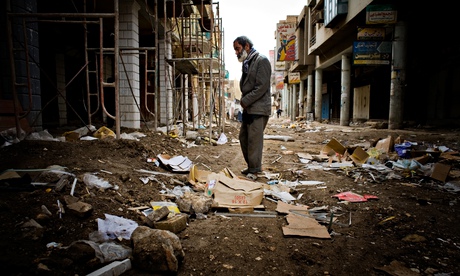
Justin Marozzi's new book is the first English-language history of Baghdad for nearly 80 years. The previous history was subtitled "City of Peace", a tag without a hint of irony, taking the name by which the city by the Tigris was known to its first inhabitants. Marozzi's additional subtitle – city of blood – is there to keep you from yawning and also to present a more rounded image of what is to come. Because what emerges from this impressive book is that whatever else it has been, Baghdad has always been a city of peace and love, and blood and spilled guts.
The city of peace was born out of blood, created following one of the perennial bloodlettings between Sunni and Shia Muslims that have occurred with depressing regularity since the untimely death in 632AD of the prophet Muhammad. The previous rulers of the Arab world, the Sunni Umayyad caliphs, had been based in Damascus. But with the ascendancy of the Abbasids in the 8th century, their Shia leader, al-Mansur – the Victorious – decided to create a new capital on the Tigris. The site was an inspired choice as it has good access via the Mesopotamia river system and along the Persian Royal Road to the markets of the Silk Road, the Arab Mediterranean and the Indian Ocean.
The cliche that history repeats itself may well have been coined in this city for few places on earth have enjoyed such relentlessly inevitable cycles of prosperity, cultural outpouring and descent into bloodletting. Perhaps no one has expressed this duality better than al-Mansur's grandson, Harun al-Rashid. Harun is famous for being the caliph of The Arabian Nights, and is celebrated for having overseen one of the most glorious of all the city's booms. While the empire was run by the grand vizier, Harun filled his magnificent palace with scholars and poets, his gold goblet with Shirazi wine and his bed with some of 40 or so gorgeous courtesans from his harem. Marozzi weighs this image against another side of the pleasure-loving aesthete, for Harun, who made the pilgrimage to Mecca eight times, was also capable of leaving his friends briefly at a banquet to go and behead two girls caught in bed together. When he returned with their jewel-bedecked heads on a platter, one of his courtiers recorded that he "found this a horrific sight".
Horror has come in many ways and over so many years, from rulers, inhabitants and envious foreigners, that it too has become part of the city's character. The Mongols sacked Baghdad in 1258, while a century and a half later Tamerlane's Tatars, trying to outdo that earlier carnage, built towers out of tens of thousands of severed heads. The Turkish sultan Suleiman the Magnificent stormed the city, as did the Persian Shah Abbas. Marozzi approaches all this with curiosity, drawing on contemporary sources, recent scholarship and the previous published history of the city. So far so good and I would have been happy to have continued in this vein, just as I would have preferred greater coverage of the Great Game period from the coming of the British overlanders in 1831 to the end of Turkish rule in 1917: the 40 or so pages devoted to it here seem rushed.
This account of Baghdad reaches another level as the story gets closer to our own time. Marozzi worked in the city after the fall of Saddam, helping to set up an assistance programme for war-hit Iraqis. His first-hand observations and conversations with people in the street and in power must have provided more than enough material to write an entire book about this period (perhaps he will). What is here is condensed, intense and fascinating. The description of the assassination of the Iraqi monarchy in 1958 is convincing and vivid, as are details of the reign of terror that Saddam inflicted on the country. At Saddam's first Ba'ath party conference, he dressed in a tailored suit, puffed a Cuban cigar, and read out a list of names of people in the room who had conspired against him. The passage where he invites these people to "repeat the party slogan and leave the hall" (to be executed) is terrifying.
Arriving at the end of this long story of sublime beauty and unimaginable horror, of generosity and greed, of grandeur and pettiness, peace and blood, the events of the past couple of decades since Saddam's invasion of Kuwait seem all the more comprehensible. So too does one of the last comments of Saddam's information minister, the man nicknamed "Comical Ali" by western media after he stood by the Tigris in 2003, with American tanks in the background and swore that coalition forces were far from the city. "I now inform you," he said, "that you are too far from reality." The same could be said of much of the story of Baghdad.

